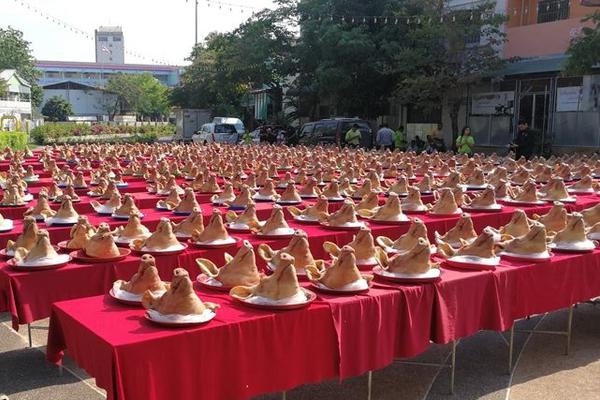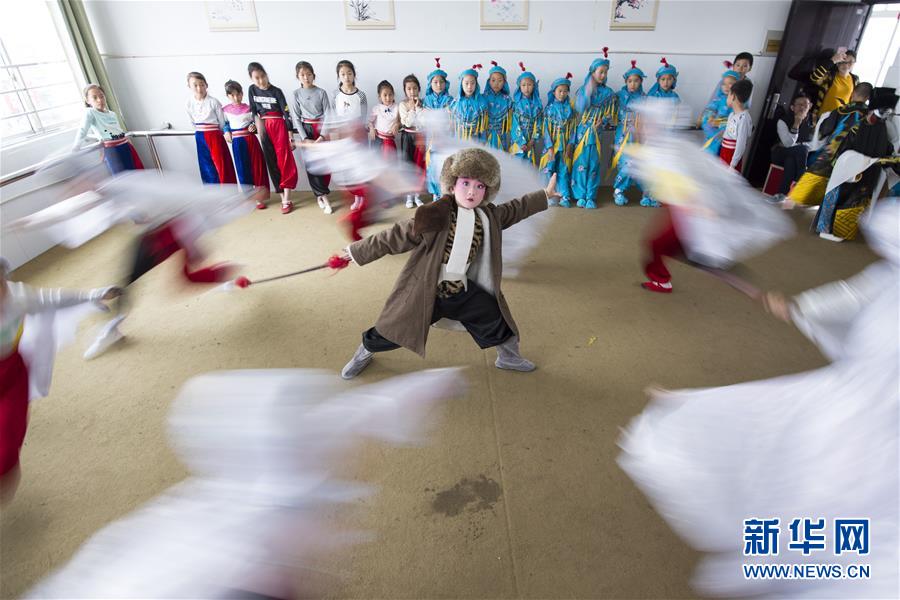Nadezhda used to scuttle around the drab halls of a bureaucratic building in southwestern Russia before she was recruited for an unprecedented experiment in space.
Suddenly, her life of anonymity — just trying to avoid hunger and the thick rubber tread of a boot — was elevated for a higher purpose. She would become a mother, and she would show the world what happens when multiples are conceived in outer space.
When she returned, everyone at the Institute of Biomedical Problems in Voronezh, Russia, waited and watched Nadezhda, whose name means "hope," like the lower-than-lab-rat that she was.
Then, the day arrived: 33 cockroach babies were born, presenting unusual mutations. They were larger, ran faster, and even looked different from their brethren bugs on Earth. While the upper shells of the newborn critters are normally clear, Nadezhda's brood was already sporting a dark reddish-brown coat.
"It's like a space horror film in the making, when you think about it," Alex Layendecker, founder of the Astrosexological Research Institute, told Mashable. "Two random cockroaches disappear into this spacecraft, and they just keep reproducing, and it compounds."
 A Russian space experiment studied cockroach reproduction.Credit: Yuliia Hurzhos / Getty Images
A Russian space experiment studied cockroach reproduction.Credit: Yuliia Hurzhos / Getty ImagesBut what Layendecker is talking about is not science fiction. The experiment sent up on Roscosmos' Foton-M bio-satellite in 2007 is one of the few sex and reproduction studies conducted in space. The results are disturbing, and not just because the study involved one of the most despised pests on the planet. It's a harbinger for the austere challenges space presents for sustaining Earth-based life. Without gravity and Earth's atmosphere, a security blanket blocking the planet's inhabitants from high doses of cosmic radiation, baby-making is quite onerous.
SEE ALSO:How astronauts could get it on if they really wanted toOn the International Space Station, flying about 250 miles above Earth, astronauts are exposed to radiation levels 100 times higher than on the ground. Yet the space station is still within Earth's magnetic field, which offers some protection from toxic cosmic rays. Imagine then how venturing out into deep space — like on a trip to Mars or a long stay at the moon — might accelerate damage to human cells.
"To do humans, an actual study with human cells and human embryos, obviously, there are all kinds of checks and balances. Most of the work is done with proxies," said David Cullen, professor of astrobiology and space biotechnology at Cranfield University in the United Kingdom. "By looking at mice (for example), you're looking at humans indirectly."
So far no mammals — or any animal with a backbone, for that matter — has completed its life cycle from conception to adulthood in space. There are only sparse, preliminary results on how space affects some of the critical phases of reproduction and early growth, such as fertilization, embryo development, pregnancy, birth, postnatal maturation, and parental care.
"It's like a space horror film in the making."
But there's another problem: The data that do exist usually involve such small sample sizes that it's difficult to extrapolate what the results would even mean for humans or any other species. Nearly all of the research has been on non-primate animals, with the exception of a human sperm study.
 Medaka fish provided the first evidence of mating, fertilization, and hatching of a vertebrate animal's eggs in space in 1994.Credit: Koichi Yoshii via Getty Images
Medaka fish provided the first evidence of mating, fertilization, and hatching of a vertebrate animal's eggs in space in 1994.Credit: Koichi Yoshii via Getty ImagesMedaka fish mating experiments in space
The first evidence of mating, fertilization, and hatching of a vertebrate animal's eggs in space occurred in 1994 during a 15-day mission aboard NASA space shuttle Columbia.
"Who has had sex in space?" Dr. Shawna Pandya, director of medical research for Above Space Development, asked rhetorically while speaking on a South by Southwest panel in March. "It has been caught on tape, it has happened, and it was four Japanese Medaka fish, for those of you who are into that. Statistically speaking, at least one of you is."
Medaka, also known as Japanese rice fish, usually live in small ponds, shallow rivers, and rice paddies. They were selected for a space experiment because the breed seems to be more tolerant of weightlessness, unbothered by the lack of a constant "up" or "down" in microgravity.
The experiment resulted in four fish laying 43 eggs. Of them, eight babies hatched in space, and another 30 were born after landing. The offspring seemed normal — with the expected numbers of germ cells found in the ovaries of the newly hatched — and some were able to have their own offspring upon their return to the planet as well.
 Looping behaviors were noted in frog larvae on the space shuttle Endeavour in 1992, with tadpoles swimming in circles, somersaulting, and darting around in haphazard directions. Credit: NASA
Looping behaviors were noted in frog larvae on the space shuttle Endeavour in 1992, with tadpoles swimming in circles, somersaulting, and darting around in haphazard directions. Credit: NASABut other fish studies conducted in spaceflight have led to offspring with bizarre mutations. Some young-adult fish have swum in tight circles or in sideways loops. Though U.S. researchers found no significant changes in systems that control balance and orientation among fish studied in spaceflight, Soviet scientists found marked differences in how they formed.
"There have been wasp studies, mice studies, rodent studies, jellyfish, quail eggs. Any species you name, they've been studied on Shuttle, Mir, Skylab, [the International Space Station]," Pandya said. "And the data, at best, is conflicting."
Want more scienceand tech news delivered straight to your inbox? Sign up for Mashable's Light Speed newslettertoday.
Frog and tadpole growth and development in space
The same looping behaviors were noted in frog larvae on the space shuttle Endeavour in 1992, with tadpoles swimming in circles, somersaulting, and darting around in haphazard directions. The tadpoles also struggled to find the air bubbles in the tanks to fill their lungs.
 While the experiment was largely deemed a reproduction success story in the mass media, tadpoles raised in microgravity were documented as having enlarged heads and eyes in scientific journals. Credit: Tom Trower / NASA Ames Research Center
While the experiment was largely deemed a reproduction success story in the mass media, tadpoles raised in microgravity were documented as having enlarged heads and eyes in scientific journals. Credit: Tom Trower / NASA Ames Research CenterIn an amphibian study two years later, four female African clawed frogs were injected with a hormone that triggers ovulation after reaching low-Earth orbit. NASA astronauts slathered sperm from male frogs onto the eggs, causing many to fertilize.
While the experiment was largely deemed a reproduction success story in the mass media, tadpoles raised in microgravity were documented as having enlarged heads and eyes in scientific journals. Some researchers who studied them in simulated weightlessness also observed these issues and suggested the super-sized heads may have been due to defects in the neural tube, which forms the early brain and spine. Across the board, it appears as though tadpole growth gets stunted, not just in space, but also after they return to the gravity of Earth.
Why study fish and amphibians in space when the animal kingdom is full of species that more closely resemble humans? Mammals would be ideal, but experts say keeping them alive during long flights is complicated and expensive. Their embryos are also difficult to study in microgravity because they develop within a uterus. That makes it tricky for researchers to separate the influence of the mother’s body from the direct effects of weightlessness on the fetus.
Related Stories
- How astronauts could get it on if they really wanted to
- Could humans have babies in space safely? Here's what we know.
- Does space romance make NASA cringe? It's complicated.
- NASA didn't invent Velcro. But it did dream up these surprising things.
- Your next skin cream may come from NASA's outer space science
 Newts are considered a good model for space experiments because the female can retain live sperm for up to five months. Credit: NASA Marshall Space Flight Center
Newts are considered a good model for space experiments because the female can retain live sperm for up to five months. Credit: NASA Marshall Space Flight CenterIn some cases, animals are picked based on logistics. For example, newts are considered a good model for space experiments because the females can retain live sperm after mating for up to five months. That large window of time allows scientists to inseminate them on Earth, but then have them go through fertilization, with the help of an injected hormone, later in space.
"To do humans, an actual study with human cells and human embryos, obviously, there are all kinds of checks and balances. Most of the work is done with proxies."
'Sex geckos' experiments in space
Reptiles are some of the least studied creatures in space, though thick-toed geckos have taken trips aboard Russia's uncrewed Foton-M3 in 2007 and Bion-M1 in 2013. They were chosen because their sticky feet help them attach to surfaces in weightlessness. When the geckos returned, scientists found bits of partially eaten unfertilized eggs in their habitats.
It remains a mystery whether lizard reproduction can occur in space. In 2014, a 60-day spaceflight on the Russian Foton-M4, which caught the attention of John Oliver on HBO's Last Week Tonight, was cut short due to problems with the mission, including a temporary loss of communication with the satellite. All five of the ornate day geckos aboard the uncrewed spacecraft, or "sex geckos" as Oliver called them, died before landing, likely because of freezing, according to later reports.
Quail eggs might also seem like a bonkers choice of animal for reproduction and development experiments in space, but studies date back to 1979 when the Soviet Union sent them aboard Cosmos-1129. Reports from TASS, the state-run news agency, said the Soviet space program was trying to figure out if quail could be a food source for cosmonauts. Apparently most of the eggs broke during the landing.
But they kept trying over the years. Though some chicks could make it through incubation, the hatch rates tended to be low, and many of the embryos showed defects in their eyes, brains, and beaks. Birds raised on the Mir space station also never pecked right, a possible sign of a balance problem. A long list of defects were noted over multiple experiments, including muscular dystrophy and underdeveloped thyroid glands.
 Space studies involving quail eggs date back to 1979. Credit: Dominic Hart / NASA
Space studies involving quail eggs date back to 1979. Credit: Dominic Hart / NASARodent reproduction experiments in space
Most of the previous mammal studies have involved rats. Despite NASA's aversion to discussing and studying sex, the space agency and National Institutes of Health collaborated on space shuttle missions to study fetal development and postnatal health of rodents in space.
In two flights, 10 pregnant rats were launched midway through gestation and landed just a couple of days before the end of the full term. Rat pups born after the flights had delays in brain development and major sensory and motor systems, including in their eyes, ears, noses, and balance centers.
In a third rodent study, two litters each of five-day-old, eight-day-old, and 14-day-old pups flew in space. Though the oldest group fared better healthwise, only 10 percent of the five-day-olds survived. Among the eight-day-olds, 90 percent lived but had about 25 percent less body weight than normal. The 14-day-olds lived and were comparable to the same-age rat pups in the control group on Earth. This may mean that the space environment has an outsized negative impact on earlier stages of development.
But experts like Layendecker reiterate that not a single mammal has ever been born in space, so it's anyone's guess how fertilization and the forming of a placenta would occur away from our home planet.
"There's not enough data from those experiments to really give us a substantive understanding of the whole problem," he said.
TopicsNASA


 相关文章
相关文章




 精彩导读
精彩导读

 热门资讯
热门资讯 关注我们
关注我们
